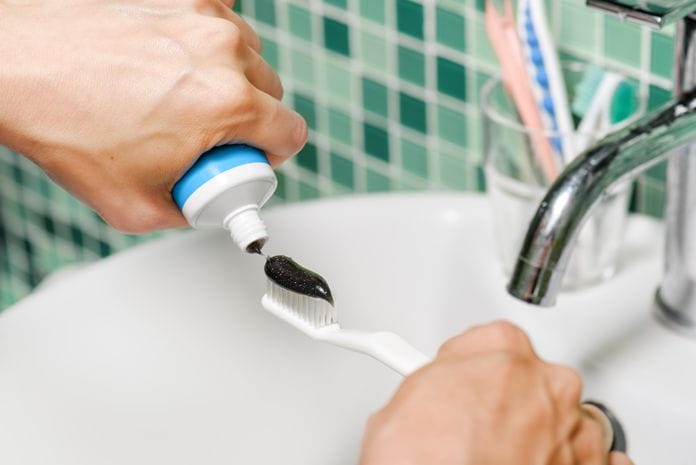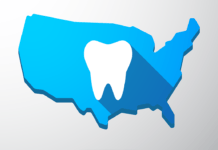My first patient in the morning was a woman in her late 20s. I had seen her once before, trying to remember if I had noted anything specific about her that will help me interact with her socially before we got into the routine of her visit. As I evaluated her gingival health, I noticed it wasn’t healthy at all. She had generalized, moderate gingivitis.
I discussed with her possible reasons she developed this degree of gingivitis as well as offering solutions as to manage her gingival health better. Halfway through performing a prophylaxis on the upper right quadrant, black speckles started coming out from underneath her gingiva, to which I thought was dark subgingival calculus, but it looked like black powder. I stopped to inform her what my findings are and she said, “Oh! I’m so sorry! It’s this new charcoal toothpaste I’m trying to help whiten my teeth, and I totally forgot to floss before I came here because I was in a rush.”
Sound familiar? I laughed it off and said, “Phew! You had me worried there for a minute.” When I finished, I reinforced my home care and periodontal treatment recommendations to ensure healthy gingiva and whiter teeth.
Social media is evolving every day. We get plenty of information on social media in the palm of our hand’s thanks to smartphones and tablets. It is no surprise social media also serves as a platform for marketing, especially when it comes to dental products. Recently, there has been an increased use and interest in activated charcoal toothpaste among consumers interested in teeth whitening.
These products are sometimes marketed by celebrities or loyal users on social media in hopes for companies to gain sales and followers. This appeals to the consumers because they see something that doesn’t look “painful,” easy to do at home, and doesn’t require a visit to the dental office. As dental providers, we always need to be ahead of the game and guard ourselves with what we know about achieving a healthy smile so our patients may make the right decision. So what do we need to know about activated charcoal toothpaste?
When I used to be an Emergency Medical Technician (EMT) I only knew “activated charcoal” as a substance used to absorb toxins in the event someone had a dangerous amount of alcohol or ingested something poisonous. Today, activated charcoal as toothpaste is used to help whiten teeth as it appears on social media. Some brands of activated charcoal toothpaste claim to also improve gum health, contain coconut oil, and are fluoride-free.
To make activated charcoal, manufacturers heat common charcoal in the presence of a gas1. The concern about activated charcoal toothpaste is it may be too abrasive on the enamel surface, even though some brands say they are safe. Charcoal’s shape and composition, along with the sizes of its particles, could make it abrasive, so it is suspected to increase the surface roughness of tooth enamel3.
While having toothpaste that is coarse or abrasive can help remove surface stains to make teeth appear to be whiter. However, dental providers must educate patients about enamel wear and possible consequences that may arise if a product, such as activated charcoal toothpaste, is used long-term. Activated charcoal is safe for most adults when used short-term1.
With our extensive knowledge of enamel preservation, dental providers must offer solutions to help condition enamel after use of activated charcoal paste like offering a topical fluoride application3. Safety and efficacy of activated charcoal toothpaste must also be considered, especially if the product has not been approved by the Food and Drug Administration (FDA). There are insufficient clinical and laboratory data to substantiate the safety and efficacy claims of charcoal and charcoal-based dentifrices2.
Despite social media trends regarding teeth whitening and other “self” oral health improvements, we must hand it to our patients that they care about their oral health. The best we can do is consistently and effectively educate our patients on what truly is healthy. Aside from patient education, encouraging more chairside conversations with our patients on what is important to their oral health, so we can always collaborate and guide them to help achieve their oral health goal.
SEE ALSO: Charcoal Whitening Toothpaste Trend: Should it Stay or Fade Away?
DON’T MISS: Charcoal Whitening: Level of Abrasiveness and Effects on Enamel
References
- Activated Charcoal. (2015). Retrieved from https://medlineplus.gov/druginfo/natural/269.html
- Brooks, J.K., Bashirelahi, N., Reynolds, M.A. (2017). Charcoal and Charcoal-based Dentifrices: A Literature Review. Retrieved from https://www.ncbi.nlm.nih.gov/pubmed/28599961
- Pertiwi, U.I. (2017). Surface Changes of Enamel after Brushing with Charcoal Toothpaste. Retrieved from http://iopscience.iop.org/article/10.1088/1742-6596/884/1/012002/meta









